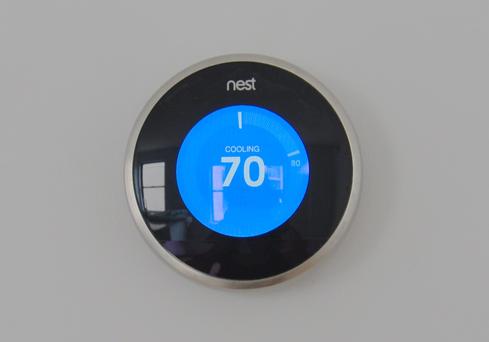In a recent InformationWeek column I opined that smart sensors would soon find their way into many disposable products -- like a soda can, which when opened triggers a contest. Initially these won't be very sophisticated, but as sensor prices fall and technologies improve, extreme connectedness across the Internet of Things will inspire new business opportunities.
One example is start-up LIFX, based in Melbourne Australia, which has raised $12 million in series-A venture capital funding, for guess what? A lightbulb. Not your standard bulb, but rather a WiFi-enabled, multi-colored, energy-efficient LED smart bulb controlled from a smartphone app.
[Union Pacific and GE Power & Water are turning IoT hype into reality, but want to do more. Read Internet Of Things: What's Holding Us Back.]
Big deal you might say -- just another gimmicky case of IoT presented in a niche consumer context but with no place in big business, right?
Wrong.
If the humble light bulb can be managed from a mobile app to control energy output, color, and ambience in the home, then why not apply the same smarts in a commercial setting. Imagine controlling retail store lighting from the touch of an app or changing hue to accentuate products. Want a holiday mood theme for the store or restaurant? Just tap the app -- a simple, cost-efficient way to differentiate your products from something that's pretty much been the same since Edison stumbled upon the light bulb idea.
Beyond light bulbs, we're seeing other IoT applications that appear consumer-centric but have broad business implications. Consider the Nest Labs home thermostat. Nest has no doubt made a tidy sum selling its smart device (40,000 to 50,000 units per month, according to reports), but there are bigger forces at play. It's really more about very smart business than smart technology.
An Austin, Texas-based utility company is working with Nest to manage power demand by remotely turning down air conditioning (AC) systems at peak times. On hot days, AC accounts for half of Texas's energy usage and drives up wholesale energy costs. So any mechanism that conserves power is good business. It's also great for the consumer too, with customers offered energy rebates if they allow the company to dial-back AC usage using Nest.
Business models like this rely on Internet of Things smarts, but the real value comes because customers buy into an intelligent application and service. Nest, for example, gathers data from sensors (temperature, humidity, and light) together with behavioral consumer analytics that learn residential habits in order to program AC settings automatically. Add the ability to combine weather data and a mobile app and Web portal to control the system and everyone stays cool -- physically, environmentally, and financially.
What's apparent from both the LIFX and Nest examples is that applications and services are the real powers behind the Internet of Things. Sensors gather the data (lots of it), but analytics and mobile apps are the secret sauce.
Developing these types of apps and services will require smart thinking from technical teams. New business model opportunities will put pressure on development teams to deliver cool new apps to consumers rapidly. But new features will become almost as disposable as the physical products themselves. As such, teams will be continuously adding, testing, refining, and removing functionality to address immediate opportunities, but with the flexibility to pivot when business models change.
As IoT makes the consumer-to-commercial crossover, key data acquisition and storage challenges will also need to be reviewed. As yet, smart systems and sensor networks can't process massive amounts of data at the point of capture -- meaning cloud becomes the offload point and intermediary for big data and analytical applications. For businesses, this means addressing persistent cloud security issues and building high-performance networks needed to support a much more diverse set of applications.
Apps of course will change too. Today, the smartphone is the focal point for control in many Internet of Things use-cases. But as standards emerge and technologies improve, more intelligence and control will be incorporated within the actual smart-sensor networks themselves.
Thinking back to light bulbs, I'm not quite ready to fork out $100 for something I see as disposable, but as a pseudo geek I probably have too much emotional investment in the tech wizardry to throw one away.
However, as prices fall and smarts improve, the act of discarding something with more compute power than the Apollo spacecraft will become commonplace. But before things are sent to the scrap pile, smart businesses will have leveraged a new generation of applications to extract every last drop of business value from the IoT tech.

No comments:
Post a Comment